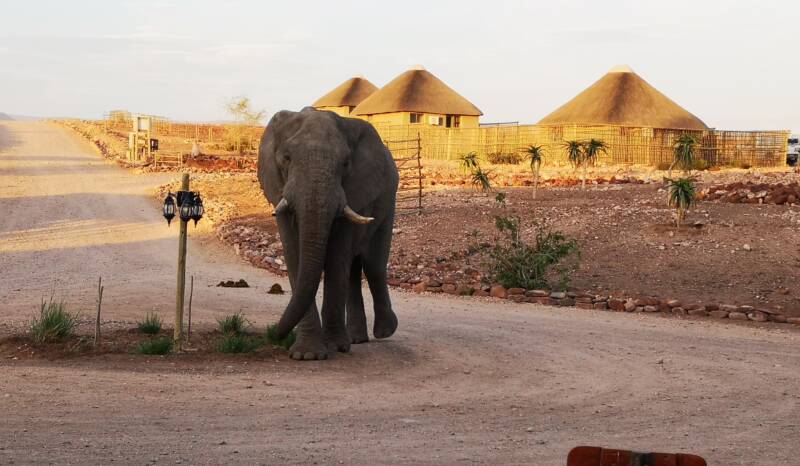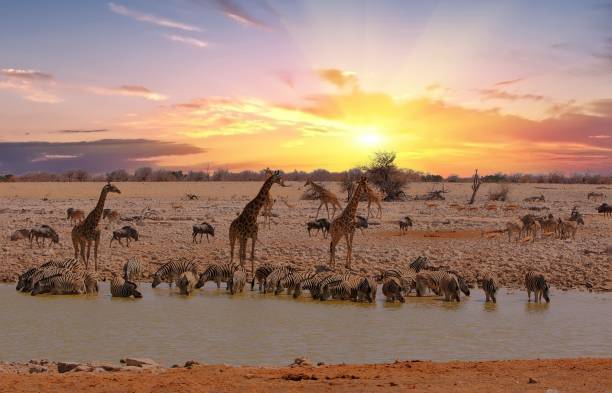Namibia in Monochrome: A Photographer's Journey Through Stark Beauty

Namibia. The name itself evokes images of vast, desolate landscapes, a stark beauty that both challenges and captivates. As a freelance wildlife photographer for National Geographic, specializing in black and white and minimalist styles, I recently embarked on an assignment to capture the essence of this extraordinary country. Armed with my trusty Leica M10 Monochrom and a heart full of anticipation, I journeyed through the Skeleton Coast and Etosha National Park, seeking to translate the spirit of Namibia into a series of monochrome images. What I found was a land of intense contrasts, profound silences, and a raw, untamed beauty that etched itself onto my soul.
The Skeleton Coast stretches out under a perpetually overcast sky, showcasing the harsh beauty of Namibia's coastline in monochrome.
The Skeleton Coast: Whispers of the Atlantic
The Skeleton Coast. A name that chills you to the bone, and yet, holds a haunting allure. The disorienting silence is the first thing that strikes you. It's a silence so complete it hums, broken only by the relentless roar of the Atlantic surf crashing against the shore. Walking along the beach, you encounter the scattered remains of giants – bleached whale bones, stark white against the grey sand. Then there are the shipwrecks, monuments to the unforgiving nature of this coast. The Eduard Bohlen, half-buried in the sand, is particularly striking.
 The Eduard Bohlen shipwreck stands as a silent testament to the power of the Skeleton Coast, captured in a striking black and white photograph.
The Eduard Bohlen shipwreck stands as a silent testament to the power of the Skeleton Coast, captured in a striking black and white photograph.
The entire landscape is bathed in a monochrome palette under the perpetually overcast sky. It's a photographer's dream and a constant challenge. With my Leica M10 Monochrom and a 35mm lens, I sought to capture the textures – the coarse grain of the sand, the smooth curve of the whale bones, the rusted metal of the shipwrecks. The play of light and shadow is crucial here, defining the shapes and emphasizing the desolation. It's a struggle to convey the vastness, the feeling of complete isolation, in a single frame. Each shot is an attempt to distill the essence of this wild, untamed place. This is Skeleton Coast Landscape Photography at its most raw and challenging.
Rhino Tracking in Palmwag: A Dance with Giants
Leaving the coast, I ventured inland to the Palmwag concession for a multi-day black rhino tracking expedition on foot. The intensity of the sun was immediate, the crunch of gravel underfoot a constant reminder of the harsh environment. My guide, Kaputu, a local Herero tracker, possessed an uncanny ability to read the landscape, spotting the faintest signs of rhino – tracks, droppings, broken vegetation. The days were long and arduous, filled with the constant scanning, the ever-present hope of an encounter. This is Ethical Wildlife Photography at its most demanding.
Then, at sunset one evening, it happened. A herd of desert-adapted elephants emerged from the dry riverbed. The sight was breathtaking. Dust swirled around them as they lumbered towards us, their massive forms silhouetted against the setting sun. The tension was palpable, the exhilaration immense. I focused on capturing the details – the wrinkles of their skin, the light glinting off their tusks.
 Desert-adapted elephants emerge from the dry riverbed in Palmwag, their textured skin and powerful presence captured in a timeless monochrome image.
Desert-adapted elephants emerge from the dry riverbed in Palmwag, their textured skin and powerful presence captured in a timeless monochrome image.
I prefer to capture animals in their natural environment, showcasing their behavior rather than posing them. The natural light is key, shaping the image and revealing the character of the animal. This unexpected encounter was a reminder of the magic that awaits those who venture into the wild with respect and patience, and exemplifies Rhino Tracking Palmwag Photography at its finest.
Sandwich Harbour: Where the Desert Meets the Ocean
Sandwich Harbour is a place of surreal beauty, where towering dunes meet the crashing waves of the Atlantic. The experience of sandboarding down these dunes is exhilarating. The roaring sound of the sand rushing past, the fine grains filling the air, and the panoramic view from the top – the turquoise Atlantic on one side and the endless expanse of the Namib Desert on the other – it's overwhelming. Balancing while trying to capture the scene with my camera was a challenge, but the reward was worth it. It's a place that demands to be photographed, a testament to the power of nature's artistry. If you are planning a Sandwich Harbour Photography Tour, make sure to bring a way to protect your camera from the sand.
Etosha National Park: A Symphony of Life
Etosha National Park is a stark contrast to the desolation of the Skeleton Coast. Here, life teems around the waterholes, a vibrant symphony of wildlife playing out against the backdrop of the vast, bleached white Etosha Pan. The shimmering heat haze above the pan, the swirling dust devils in the distance, and the concentration of animals – elephants spraying themselves with mud, lions lounging in the shade, springbok grazing peacefully – it's a feast for the eyes. Best time to photograph Etosha National Park wildlife is during the dry season.
The contrast between the bleached white of the pan and the vibrant colors of the animals is striking, even in black and white. Using the Leica APO-Telyt-R 180mm f/3.4 lens (with a black and white filter), I focused on isolating individual animals against the vast backdrop. The 180mm lens is perfect for capturing distant wildlife, but I used it sparingly, as my preference is always for my trusty 35mm prime. There's something about the intimacy of the 35mm that draws me in, forcing me to get closer, to connect with my subject on a more personal level. This is Etosha National Park Wildlife Photography at its most compelling.
Namibian Stargazing Photography: Whispers of the Cosmos
The night sky in Namibia is unlike anything I've ever seen. Completely free from light pollution, it explodes with stars, a breathtaking panorama of cosmic wonder. The constellations of the southern hemisphere, like Crux (the Southern Cross) and Carina, are clearly visible, their brilliance amplified by the darkness. Under the immense expanse of stars, you feel utterly insignificant, yet simultaneously connected to something far greater than yourself.
Capturing the beauty of the Milky Way with my equipment was a challenge, pushing the limits of my gear and my skill. But the attempt was worth it, a humbling reminder of the infinite wonders that surround us, and a true test for Namibian Stargazing Photography equipment.
Culinary Delights: A Taste of Namibia
Dining under the stars at a rustic desert lodge was a truly unforgettable experience. The taste of Namibian venison, specifically Oryx steak, grilled to perfection, was exquisite. The Biltong, dried and cured meat, was another highlight. And of course, no meal is complete without sampling Windhoek Lager, its crisp and refreshing taste a welcome relief in the desert heat. I appreciated the use of locally sourced ingredients and the simple, flavorful preparation of the dishes.
Final Thoughts: A Land Etched in Monochrome
My Namibia Photography Tour was more than just an assignment; it was a journey of discovery, a chance to connect with a land of stark beauty and profound silences. Capturing the essence of Namibia through black and white photography was both a challenge and a reward. It forced me to look beyond the surface, to find the beauty in the harshness, the power in the simplicity. I've come away with a renewed appreciation for the power of monochrome, for its ability to distill a scene to its purest form, revealing the underlying textures and emotions. If you want to join a Black and white photography workshop Namibia Skeleton Coast, check out vistalocation.com. Namibia, you have etched yourself onto my soul, a land forever remembered in shades of grey.